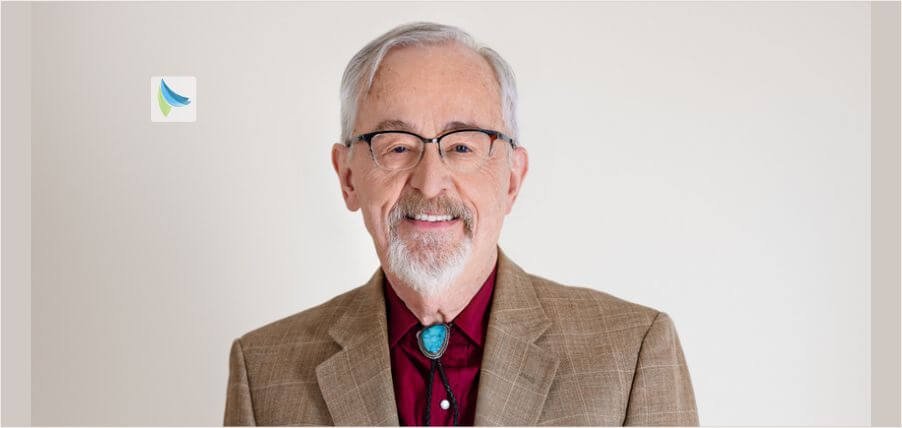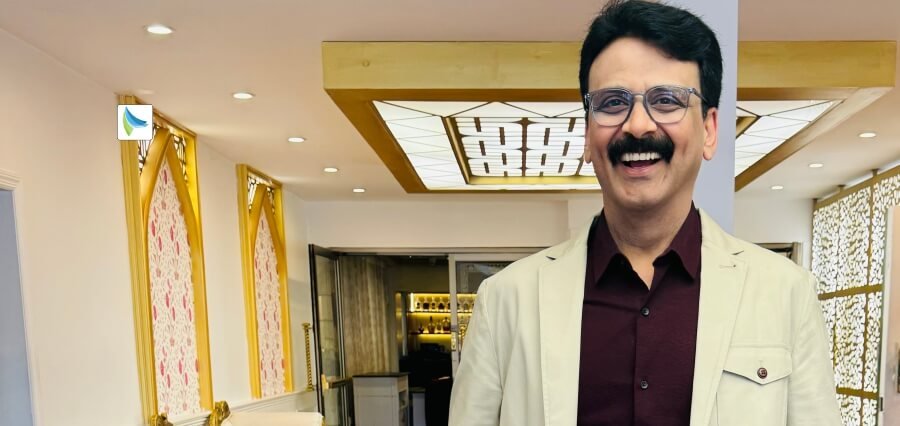There was a growing gap between a mid-market aerospace company and a defense company that provided the latest technological solutions and services in the commercial and military aviation space.
Filling this gap and capitalizing on the decades of industry expertise across aviation, drone services, and avionics markets, The AIRO Group acquired Jaunt Air Mobility through a merger acquisition.
Jaunt Air Mobility was formed in 2019 to develop and commercialize an all-electric aircraft to serve the emerging urban air mobility markets. With an aim for the sky, the company acquired the slowed-rotor compound (SRC) technology from Carter Aviation, a proven transformative technology developed and matured over the last two decades.
Jaunt recognized an opportunity to combine the SRC technology with the latest advancements in lithium-ion batteries and electric motors and the promising benefits of thermoplastic materials. The company has established a successful business model, developing a new type of aircraft referred to as an air taxi that moves people short distances over large, congested cities.
Multiple studies (Morgan Stanley, Deloitte, Booze Allen, Goldman Sachs) show significant market growth and aircraft demand over the next two decades for the emerging air taxi market, commonly referred to as Urban Air Mobility (UAM). They project a $287 billion global market by 2030 and a $1.5+ trillion market by 2040.
Team Invested in Success
The Jaunt team comprises exceptional individuals with executive leadership backgrounds in aviation and business and decades of experience in aircraft design and technology development, certification, and flight testing.
“Any entrepreneurial endeavor requires a highly capable team; a team with vision and tenacity,” says Martin Peryea, CEOof Jaunt.
Dr. Simon Briceno is the Chief Commercial Officer for Jaunt Air Mobility. He is accountable for developing Jaunt’s commercial strategy, identifying new business opportunities, and working with its customers and operators to establish an Advanced Air Mobility (AAM) transportation system. Simon also leads the charge in expanding Jaunt’s global network of aviation and infrastructure partners. He manages a team of experienced professionals to develop the AAM Eco-system.
The AIRO Group
The AIRO Group has assembled a synergistic portfolio of well-positioned companies with differentiated and innovative technologies, ranging from established and mature product offerings. These products include innovative large commercial aircraft.
In addition to the SRC technology, Jaunt has developed multiple patented technologies essential to meeting or exceeding requirements for noise, safety, operating costs, and acceptance by communities and passengers alike. Jaunt is focused on the entire aircraft life-cycle from development and manufacturing to operations and supportability with a sustainable aircraft design. This multi-disciplinary approach is optimized for maximum safety and affordability.
“Jaunt is one of the most uniquely positioned companies in the eVTOL world. The fundamental aircraft technologies of the Slowed-Rotor Compound (SRC) have been proven out over the past quarter century. The world-class team now has the backing of the highly respected AIRO Group and tie-ups with impressive partners around the world. Perhaps most importantly, there are already existing rotorcraft airworthiness standards for the US Federal Aviation Administration (FAA), European Union Aviation Safety Agency (EASA), and Transport Canada (TCCA) under which the Jaunt Journey can be certificated. There’s a lot of hard work ahead of Jaunt, but the company is well-positioned to meet its goals,” saysMike Hirschberg, Executive Director, The Vertical Flight Society (Fairfax, VA).
Design considerations and selection of world-class Tier 1 aerospace suppliers are focused on implementing innovative technologies, expertise in certification, and high-volume manufacturing processes that minimize aircraft acquisition costs. Jaunt works with premier aircraft operators and support and maintenance organizations to reduce direct operating costs. These savings result in the lowest passenger ticket and cargo costs.
Building Next-Gen Aircraft
Jaunt Air Mobility is building the best in the next generation of aircraft to meet the growing demands for faster travel times over urban areas. It is the world’s first and only compound aircraft that is a true combination of a helicopter and fixed-wing airplane, with the best aspects of each and a safe, seamless transition between hovering and vertical flight and a fast, smooth cruise.
Jaunt’s eVTOL is the quietest design configuration and offers the best ride quality. In the unlikely event of a complete power loss, the aircraft can perform a safe landing through enhanced autorotation and gliding capabilities making it one of the safest aircraft in aviation. The patented technology has been used on multiple Jaunt demonstrator aircraft, with exceptional performance, over 300 piloted hours, and 1000+ takeoffs and landings, validating the core technology.
The development of eVTOL aircraft has opened many potential aviation applications. The two most significant market opportunities are the movement of passengers and cargo in and around urban cities. The secondary markets are emergency response which includes medevac, law enforcement, search and rescue, and tourism.
Jaunt has designed its aircraft to transport passengers and easily convert its cabin to transport cargo. The company aims to provide specialized aircraft kits and equipment for secondary markets.
The success of the urban air mobility markets depends on not just the electric aircraft but the many other novel ecosystem elements. Operating all-electric aircraft will require new charging infrastructure, maintenance, passenger services, digital interfaces, and many more supporting elements to enable the high-tempo operations envisioned for these markets. Jaunt has recognized these ecosystem requirements from the outset.
The company has assembled a group of companies and formed a consortium called Access Skyways, where collaboration is needed to find solutions in areas such as infrastructure to ensure commercial operations are feasible upon aircraft entry into service.
Simon says, “As a research faculty member at Georgia Tech in aerospace engineering, I spent 15 years leading innovative aircraft design and technology integration finding the right balance of novel technologies and ones that have been proven is critical to getting through certification and commercial operations in a viable time.”
Dealing with Challenges
The company is tackling challenges in the following three areas:
- Thermoplastic technology development and its manufacturing processes. Qarbon Aerospace, Jaunt’s partner in developing their airframe structures, has made tremendous strides in advancing the use of thermoplastics for aviation applications. The company will work on the remaining development areas to ensure the technology is ready for certification and production. Simon explains, “We will use the latest technologies like thermoplastics and clean manufacturing processes, resulting in an aircraft that will be 99% recyclable.”
- Public acceptance of eVTOL/air taxi aircraft. The urban air taxi market is new to the public, and OEMs must demonstrate that these aircraft are as safe as commercial airliners, are much quieter than helicopters, and are affordable for the everyday commuter. The industry has come together to address many of these challenges.
- Looking further into the future – once urban air taxi markets are established and growing, there will be a need to ensure that the airspace can safely accommodate a growing quantity of aircraft. There will be a need to transform the airspace traffic management over urban areas.
Affordability at its Core, Sustainability at the Forefront
The urban air-taxi market is a new mobility solution for people in and around large cities. This new form of transportation will allow people to move much faster and to farther destinations in an aircraft that will be safe, quiet, and environmentally friendly. Jaunt and its operators will offer affordable air-taxi services for commuters in major global metropolitan areas.
At the center of Jaunt’s values is a focus on the economic impact the organization will have on communities and ensuring that it remains environmentally sustainable.
In addition, an economic impact study examined Jaunt’s significant direct, indirect, and induced financial impacts and employment creation, highlighting thousands of jobs resulting from aircraft development and production. Jaunt’s aircraft manufacturing center in Québec leverages the thriving aerospace industry there. The company plans to tap into the established aerospace supply chain and the engineering talent.
Simon concludes with the words, “Jaunt will demonstrate a pre-production model of the Jaunt Journey in 2024, and Jaunt’s certified aircraft will enter service in 2027. Looking further into the future, the trend in aviation is autonomy. Jaunt plans to convert its aircraft for autonomous (with no pilot onboard) operations, which will happen when the public and certifying authorities are ready. In the meantime, The AIRO Group commercial drone division focuses on providing new AI solutions on drone platforms which will serve as testbeds for Jaunt to learn about future autonomous capabilities.”


















